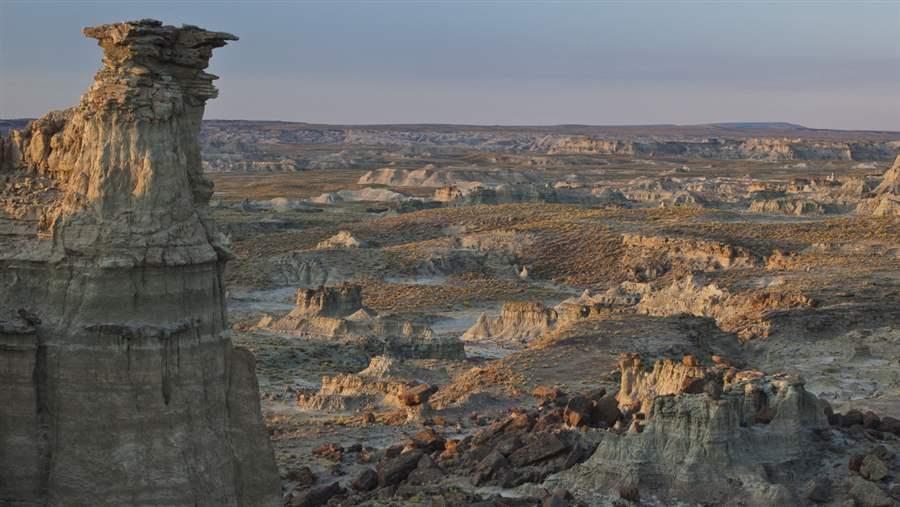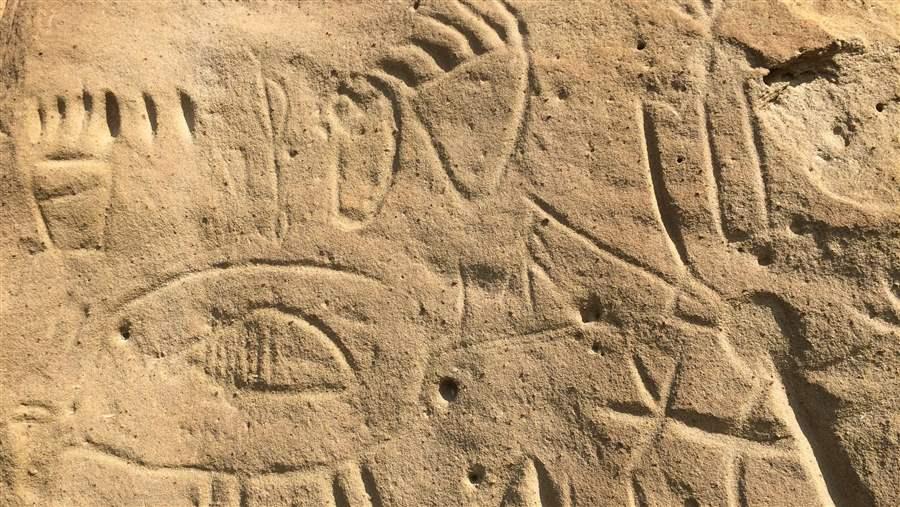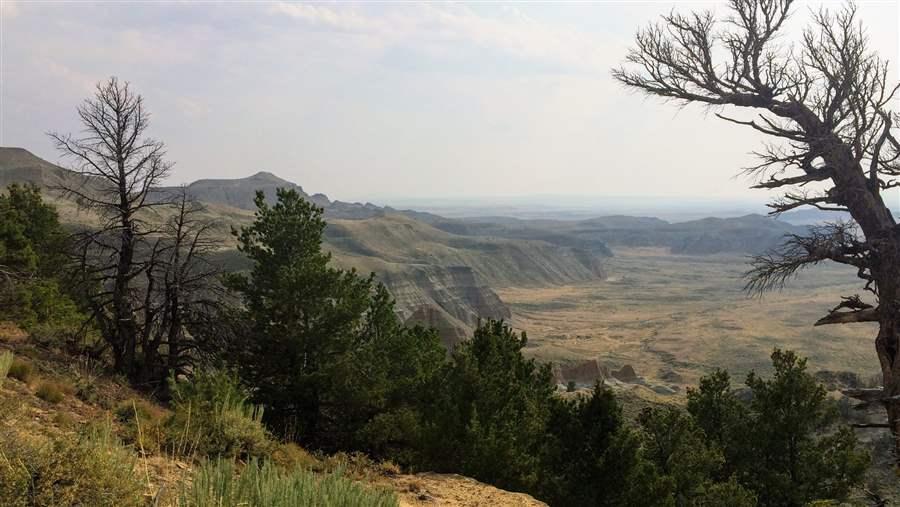New BLM Plan Should Conserve Wyoming’s Fossils, History—and Even Hoodoos
Quiet recreation in Rock Springs area supports jobs and generates millions in revenue

Adobe Town’s badlands, buttes, and spires were created by thousands of years of erosion.
Bob Wick/Bureau of Land Management
The wild and varied landscapes of southwest Wyoming are home to many of the state’s natural treasures, including the world’s largest herd of desert elk and the biggest active sand dune system in the U.S., and they also host one of the longest terrestrial wildlife migrations in North America. Spectacular areas such as Greater Adobe Town, Little Mountain, and Devil’s Playground offer visitors outstanding opportunities for backcountry recreation and solitude.

The White Mountain petroglyph site in the Red Desert north of Rock Springs contains hundreds of spectacular rock art images etched into a sandstone outcrop.
The Pew Charitable Trusts
The Rock Springs field office of the Bureau of Land Management (BLM) oversees some 3.6 million acres of these public lands, which generate significant revenue for Rock Springs, Green River, and other small communities in southwest Wyoming. In 2016, more than 483,000 visitors used these landscapes for nonmotorized recreational activities. And a 2017 ECONorthwest report commissioned by The Pew Charitable Trusts found that visitors participating in “quiet recreation” such as hunting, camping, and hiking within the Rock Springs field office planning area support more than 280 local jobs and generate $22 million in total economic output annually. Within 50 miles of recreation sites, direct spending on those activities amounted to an estimated $27.2 million in 2015, the report found.
The BLM is now revising its management plan for the area, which will set out the priorities and uses for these lands over the next 20-plus years. Pew is working with local and regional partners to ensure that the plan strikes a commonsense balance among conservation, recreation, and development.

Buttes surrounding Whitehorse Creek Basin rise as much as 650 feet above the basin floor, offering visitors magnificent views and uncommon solitude.
The Pew Charitable Trusts
Among the notable spots in the region:
- The Greater Little Mountain area’s high-elevation forests, meadows, canyons, and streams are a paradise for hunters and anglers, and also draw hikers, cross-country skiers, and other outdoor enthusiasts.
- Devil’s Playground and Cedar Mountain contain archaeological and cultural sites dating back some 9,000 years, as well as fossils.
- Remnants of the historic Oregon, California, and Mormon trails cross the Northern Red Desert. The Oregon Buttes, the halfway point between Independence, Missouri, and the Pacific Ocean, marked the border between the U.S. and Oregon Territory until 1846 and were a milestone for those traveling westward in the 1860s.
- Providing some of western Wyoming’s best basin-to-mountain views, the Big Sandy Foothills is also a vast passageway for the thousands of mule deer that follow one of the longest wildlife migration routes in North America—the Red Desert to Hoback migration corridor.
- Greater Adobe Town, a series of weather-sculpted rock formations in Wyoming’s Red Desert that resemble ancient dwellings, attracts people seeking authentic backcountry recreation. The area features Eocene-period fossils, hoodoos, badlands, and ruins that reportedly date to when Butch Cassidy hid here with his infamous gang.
Pew encourages the BLM’s Rock Springs field office to continue to advance its work with all stakeholders in developing a revised management plan that conserves this spectacular region for current and future generations.
Ken Rait directs The Pew Charitable Trusts’ western lands initiative.











